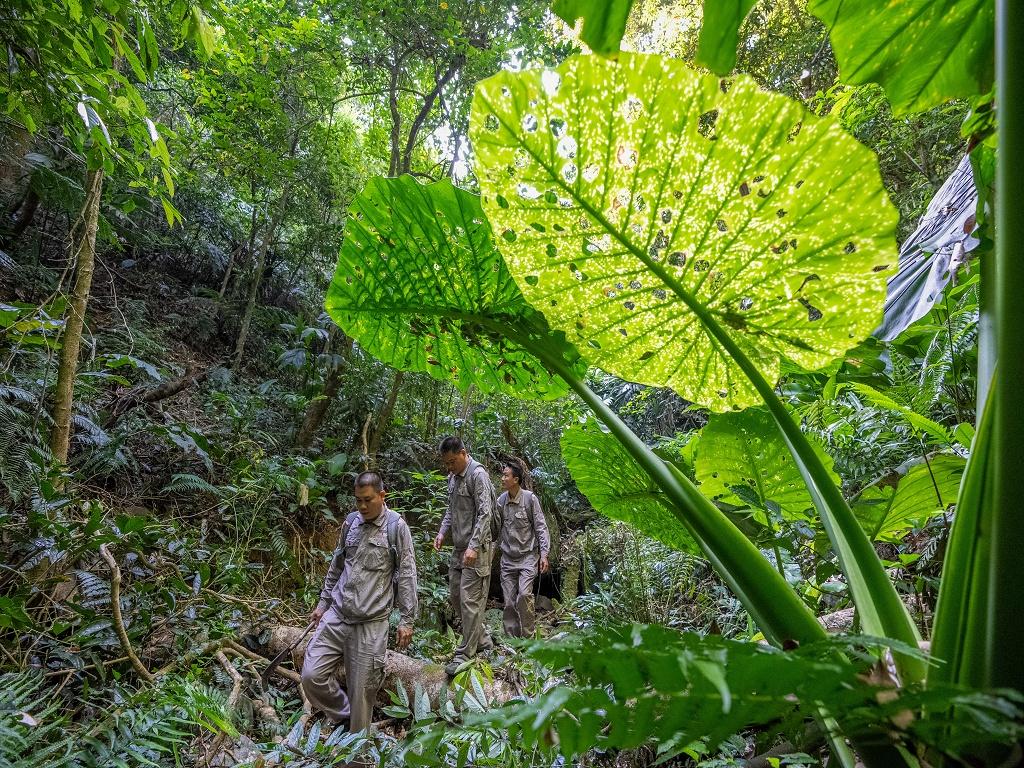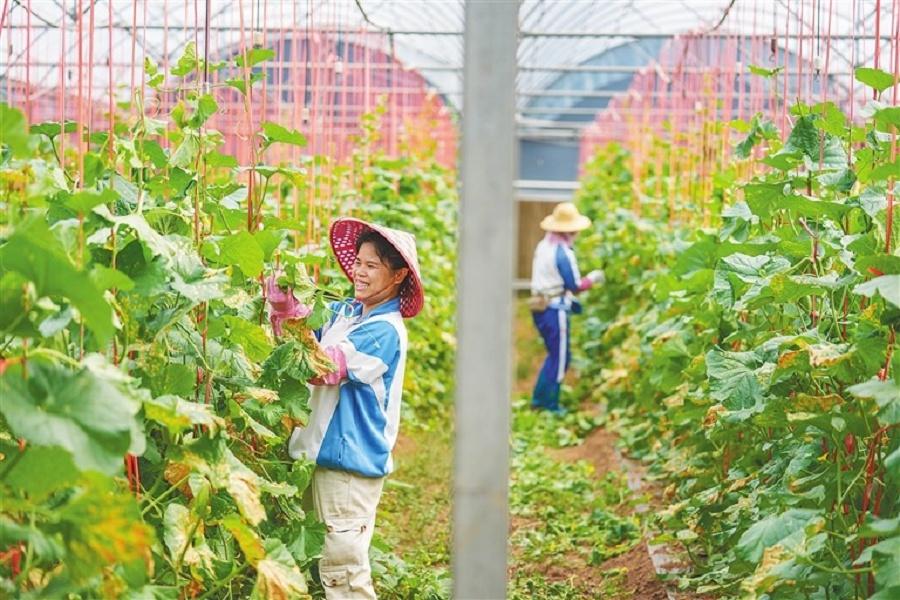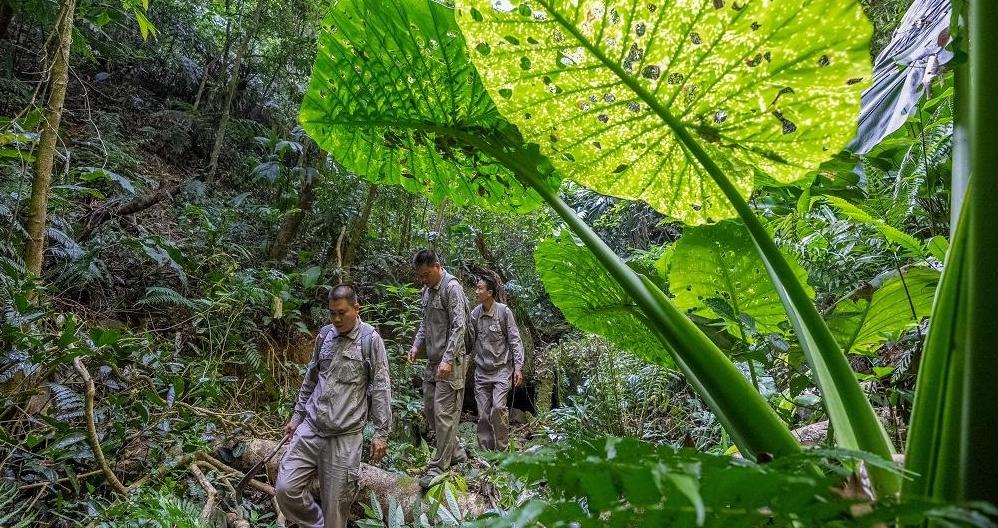Ecological Relocation
China Pictorial, December 04, 2023 Adjust font size:

Rangers on patrol in the Hainan Tropical Rainforest National Park. (Photo by Li Tianping)
Melons and fruits grow lushly in the greenhouses. Crops such as corn and sweet potatoes grow in contiguous plots in distant fields. Some residents enjoy chatting in the village square while others choose to work out on the court.
In less than three years, the villagers of New Gaofeng Village, Baisha Li Autonomous County, southern China’s Hainan Province, have embraced more uplifting lifestyles after moving out of the mountains.
At the end of 2020, all 118 households of Gaofeng Village, the first village to implement ecological relocation to make way for the construction of the Hainan Tropical Rainforest National Park, moved to New Gaofeng Village, adjacent to the county seat. Since then, villagers have moved into 59 brand-new two-story residences.

Villagers check cantaloupe growth in a greenhouse in New Gaofeng Village. (Photo by Li Tianping)
To boost local industrial development, the government of Baisha Li Autonomous County compensated the villagers with about 5,000 mu (each mu is equal to about 667 square meters) of rubber forests next to the new village at a standard of 10 mu per capita. Concurrently, high-quality agricultural enterprises were introduced to build greenhouses for rotary planting of mushrooms and vegetables, which integrated resources from the government, local businesses, village collectives, and farmers.
“In 2021, the base only covered barely 50 mu,” said Gu Haiming, first secretary of New Gaofeng Village and head of the village’s rural revitalization project. “In 2022, it expanded to over 160 mu with increased output value. This year, we are aiming for more ambitious goals.” Since the start of 2023, local villagers have been mobilized and trained to cultivate a new species of mushroom called Pleurotus tuber-regium in their own rubber forests, covering nearly 20 mu in total so far.
All school-age children in the village have enrolled in Baisha Siyuan Experimental School and Baisha School in the county seat since the resettlement, and each student is eligible for an educational subsidy ranging from 500 to 2,900 yuan (around 70 to 410 U.S. dollars) per academic year.
Fu Changhuai, a local villager, has witnessed the ecological changes brought about by the resettlement. According to Fu, a forest ranger in the Hainan Tropical Rainforest National Park, the relocation is already minimizing human-induced destruction of the forest. Except for some buildings that have been preserved for scientific research on tropical rainforest and tutorial activities, all residences and supplementary facilities in the former Gaofeng Village were demolished to create more room for the flora and fauna in the national park.
“Recently, I have been seeing a lot of wild animals appearing around our management station including macaques, wild boars, and pheasants,” Fu said in pride on the national park’s ecological progress. “These animals used to fear people, and now they move around freely and even get close to people.”
“The living standards of local people and the eco-environment are more promising,” he added. “I will devote all my efforts to protecting the mountains where I was born and raised.”

Zhang Chaoying (middle), an inheritor of the Li Brocade, a traditional textile included in the UNESCO List of Intangible Cultural Heritage in Need of Urgent Safeguarding, makes Li ethnic costumes with her teachers. (Photo by Yuan Chen)
